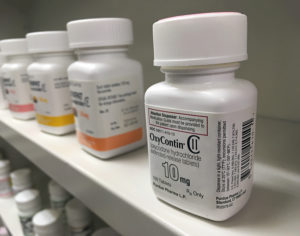
In 2010, Purdue Pharma, the maker of OxyContin, created a new formulation for its pain medication. University of Notre Dame William Evans explains the company’s efforts didn’t work out as planned. The company wanted to decrease the number of overdoses associated with its product by making it less easy to abuse.
Heroin Cheaper Alternative to Prescription Drugs
Professor Evans went on to say that the problem was there was already a cheap alter-native to OxyContin available to people, which was heroin. He says up to 2010, heroin death rates were relatively low. Since that time, they have been increasing.
As the researchers studied the data, they discovered the number of deaths due to hero-in skyrocketed after OxyContin was reformulated.
Shift to Prevention and Treatment Needed
When asked how this research could help with the current opioid epidemic, Professor Evans says the focus needs to shift to prevention and treatment. Evidence of this is that having one of the most addictive prescription opioids become less available for abuse didn’t help the overall problem, just changed substances.
Professor Evans went on to say that the Food and Drug Administration (FDA) is trying to encourage drug manufacturers to make abuse-deterrent formulations of all their opi-oids. He points out there is a problem when those seeking to abuse drugs have a cheap, readily available option. These users may simply switch to the illicit drug instead.
In a statement, Purdue Pharma pointed out that less than four percent of those who abuse opioids end up progressing to heroin. The company also stated that heroin use increased starting in 2007 because the drug was cheap and easily available. It also pointed out that Purdue’s products make up less than two percent of opioid prescrip-tions. However, they failed to comment on the very shady past that the drug has had, the many thousands of deaths associated with it, and the many local, state and national government agencies that have filed lawsuits against the company for its deceptive marketing practices surrounding the drug.






